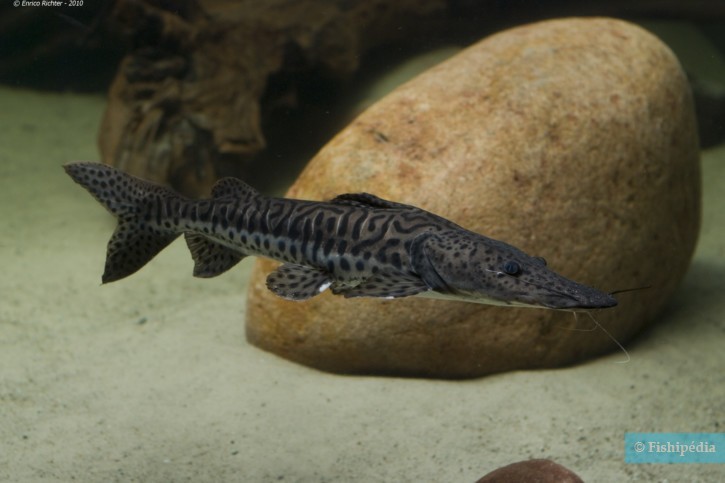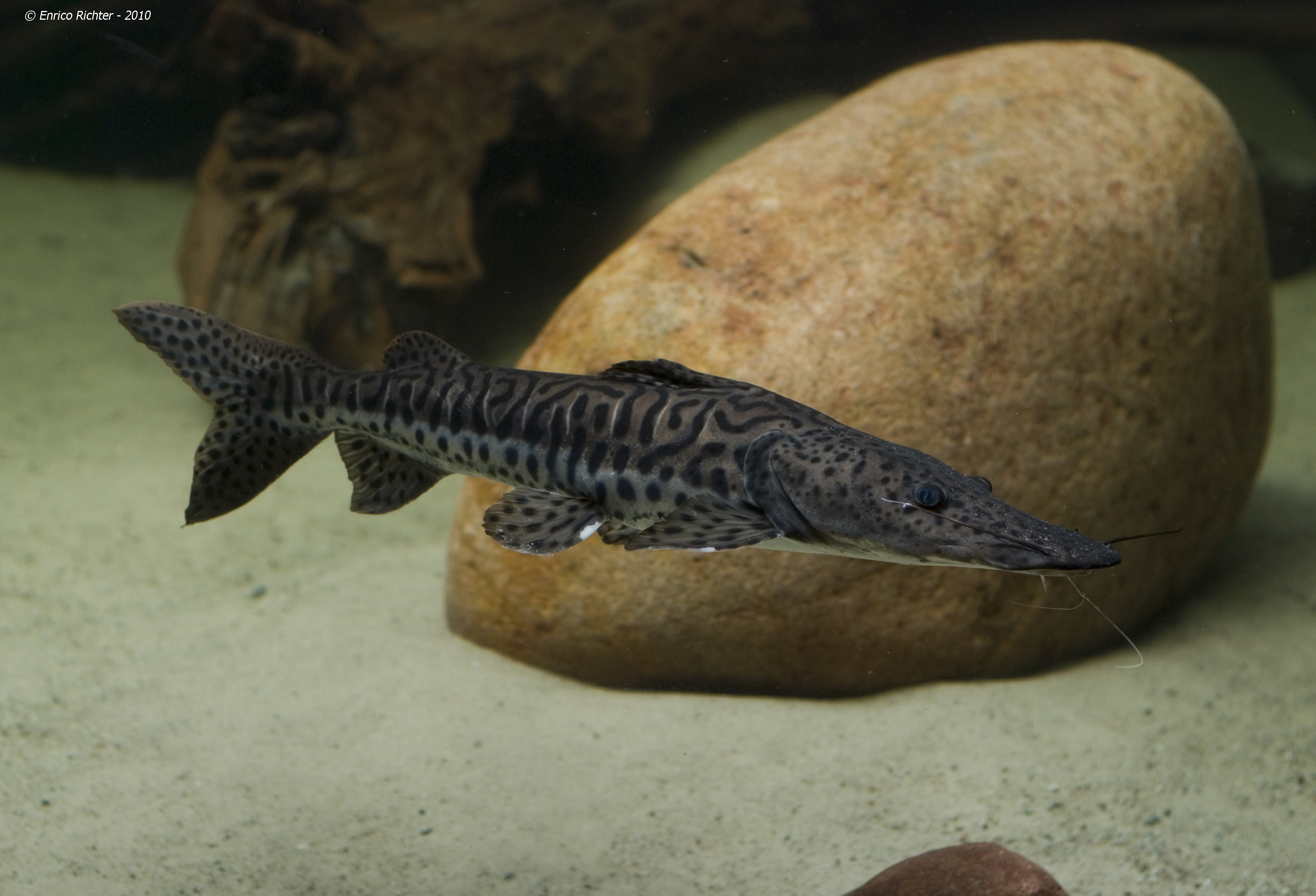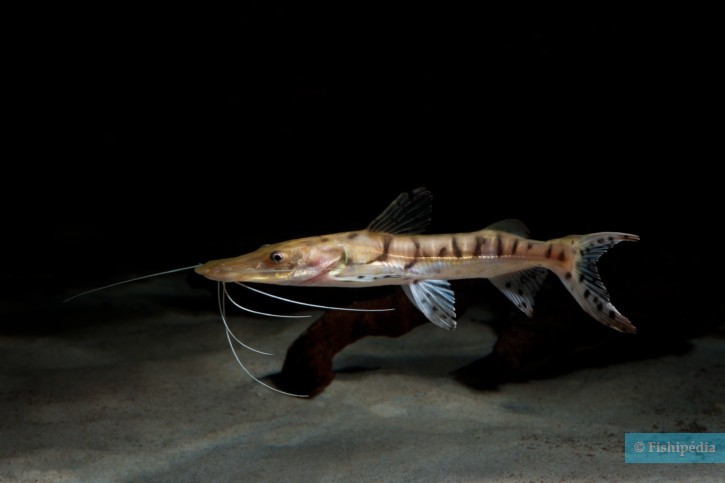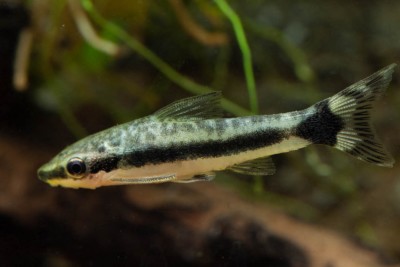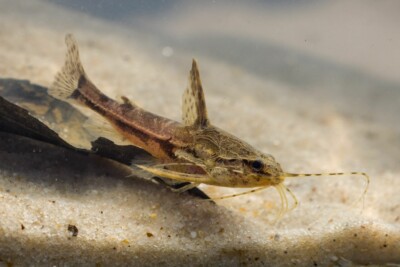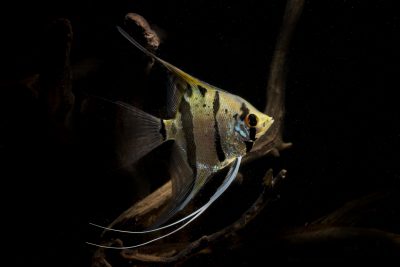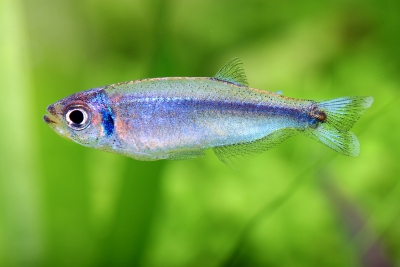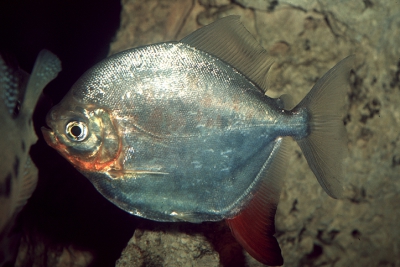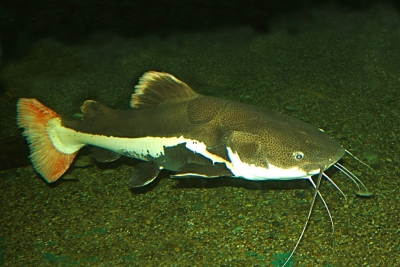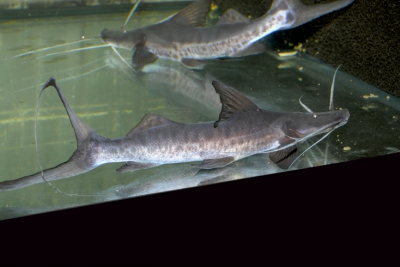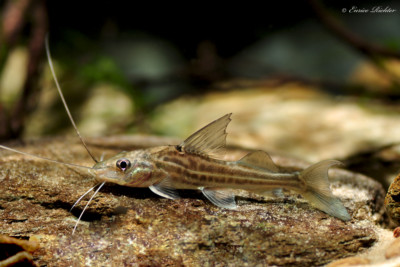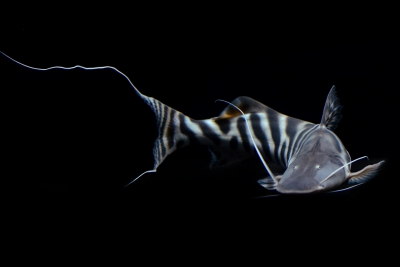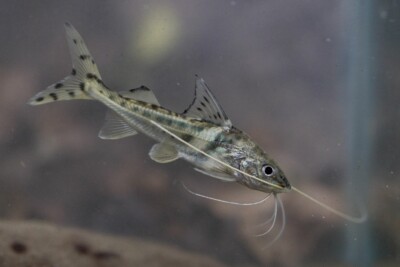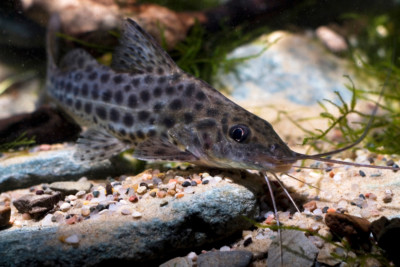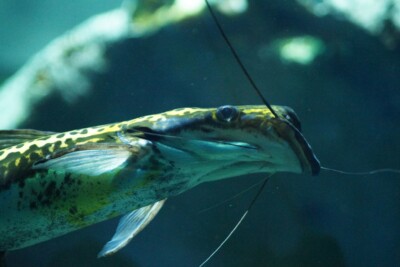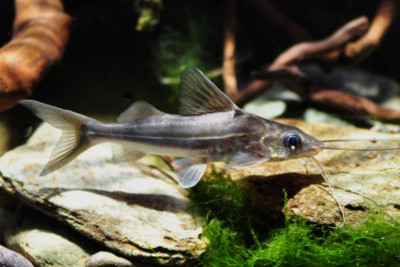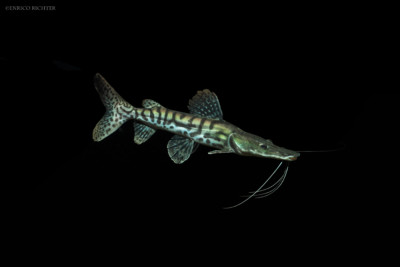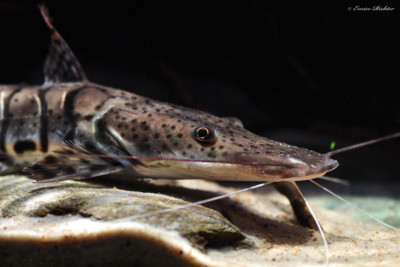Introduction
Pseudoplatystoma punctifer is a fresh water fish from the Amérique du Sud.
This sheet is currently being prepared. The texts currently proposed come from our data model or are being drafted. To request priority for this content, you can write to us HERE.
Who is it?
Morphology
-
Type
-
Average size110 cm
-
Maximum size120 cm
-
Longevity18 year
-
Patterntasks
-
Type
-
Average size110 cm
-
Maximum size120 cm
-
Longevity18 year
-
Patterntasks
How to recognize This fish ?
This fish has the particularity to possess several pairs of barbels, which allow him to search the bottom and to detect the food thus moved.
Pseudoplatystoma punctifer measures between 110 and 120 cm. This fish is tricolore with a predominantly argent, noir and gris body. The also has noir tasks.
Behaviour & Life cycle
-
dietcarnivorous
-
Sociabilityliving in a group or alone
-
territorialNo
-
Way of livingnocturnal
Pseudoplatystoma punctifer hunts in the stalk and is one of the predators of its biotope. Opportunistic, it does not hesitate to attack any smaller animal nearby.
Pseudoplatystoma punctifer is a fish living in a group or alone naturally found near the bottom. This species is carnivorous . This fish lives mainly at night. Usually, it leaves its hiding place and starts to be active once it gets dark.
Although Pseudoplatystoma punctifer is non-territorial, it is sometimes aggressive towards other species.
Reproduction
-
Reproductiondont le mode de reproduction est encore inconnu
Pseudoplatystoma punctifer is a fish dont le mode de reproduction est encore inconnu.
Harmless species
This species does not represent any particular threats to humans when encountered in its natural environment.
Origin and distribution
Conservation status of populations (IUCN)
What is its habitat?
Natural environment characteristics
-
Temperature22 - 26 °C
-
pH (acidity)6.2 - 7.2
-
gh (hardness)10 - 20
-
FlowMedium and Slow
Biotope presentation
Pseudoplatystoma punctifer is most often found at a depth between 0m and 5m. However, it is not impossible to find this species at other depths. This animal evolves in areas characterized by a strong presence of vegetation (aquatic and marsh plants, decaying organic matter, roots...).
This species lives near large roots, in which it can find refuge in case of danger. This type of habitat is often found not far from the banks.
Species of the same biotope
To go further
Sources & Contributions
Participation & Validation
The Fishipedia team and specialist contributors are committed to providing high-quality content. However, although the information comes from scientific sources or testimonials from specialists, the cards may contain inaccuracies.

Benoit Chartrer
Translation
Translation done with the valuable contribution of our translators, who make this information available to a wider audience. We sincerely thank them for their commitment.
Bibliographic references
- - GBIF
- - Biologie de Pseudoplatystoma fasciatum et P. tigrinum (Teleostei: Pimelodidae) dans le bassin du Mamoré (Amazonie Bolivienne) - Gérard Loubens - Jacques Panfili - Ichthyol. Explor. Freshwaters - 2000.
- - Taxonomy of the catfish genus Pseudoplatystoma Bleeker (Siluriformes: Pimelodidae) with recognition of eight species - Brooks M. Burr - URIEL ANGEL BUITRAGO–SUÁREZ - ZOOTAXA - 2007.
- - Geographical genetics of Pseudoplatystoma punctifer (Castelnau, 1855) (Siluriformes, Pimelodidae) in the Amazon Basin - M.P.C. Telles - R.G. Collevatti - R.S. Braga - L.B.S. Guedes - T.G. Castro - M.C. Costa - N.J. Silva-Júnior - R.B. Barthem - J.A.F. Diniz-Filho - Genetics and Molecular Research - 2014.
Scientific partners
Tags
Species of the same family
Same genus
Species of the same biotope
